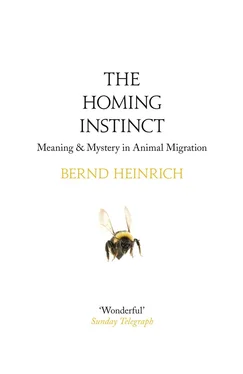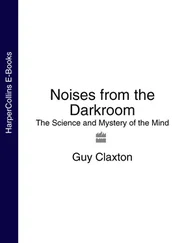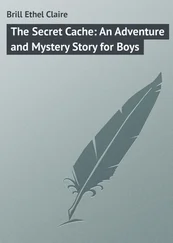Cranes’ dances often stimulate humans to dance as well and have been mimicked in many cultures all over the world where cranes live. Crane dances were performed by ancient Chinese, Japanese, southern African, and Siberian people. If not emulated, cranes are admired. In the Blackfoot tribe of Native Americans of northern Montana, the last name “Running Crane” is common.
Nerissa Russell, an anthropologist, and Kevin McGowan, an ornithologist from Cornell University, revealed that eighty-five hundred years ago at a Neolithic site in what is now Turkey, people probably performed crane dances using crane wings as props that were laced to the arms. Furthermore, someone of these people apparently hid a single crane wing in a narrow space in the wall of a mud-brick house along with other special objects (a cattle horn, goat horns, a dog head, and a stone mace head). Russell and McGowan also found evidence that vultures may have been hunted for their feathers for presumably a much different costume worn as well for a ceremonial purpose. The authors inferred that the cranes were linked with happiness, vitality, fertility, and renewal (since they arrived in the spring). While the crane dance was one of life and birth, and possibly marriage and rebirth, the vulture dance was associated with death and perhaps return to the afterlife.
Russell and McGowan believe that the crane wing interred in the wall of the house was never intended to be seen. It was a symbolic object related to marriage and construction of a new home and may have been coincident with a particular human marriage and home-making. The associations among dancing, pairing, and raising young and home would have been natural for people who saw cranes return to their home ground, just as I had seen Millie and Roy do. Seeing the close parallels in the biology of the birds with their own lives, and understanding the cranes’ dancing as helping to make or cause the good things that followed, Neolithic people would have been compelled to symbolically emulate the crane dance of homecoming and of new life.
Observation sets the problem; experiment solves it, always presuming that it can be solved.
— Jean-Henri Fabre
CRANES FLY AN ENORMOUS DISTANCE TWICE ANNUALLY, BUT relative to their size, bees also fly huge distances — up to ten kilometers — and the foragers may perform such trips hourly. We can experiment with them to find out how they navigate. What we know about bee homing so far is nothing less than astounding, and it is built on a long history of research, primarily pioneered by the imaginative experiments dreamed up and performed by an Austrian named Karl von Frisch and his colleagues that date back over a half-century. Arguably, our knowledge dates back still further to early American frontiersmen trying to find bees’ treasure troves of honey.
In 1782, Hector St. John Crèvecoeur, a writer and farmer from Orange County in New York State, wrote:
After I have done sowing, by way of recreation, I prepare for a week’s jaunt in the woods, not to hunt either the deer or the bear, as my neighbors do, but to catch the more harmless bees … I proceed to such woods as one at a distance from any settlements. I carefully examine whether they abound in large trees, if so, I make a small fire on some flat stones, in a convenient place; on the fire I put some wax; close by this fire, on another stove, I drop honey in distinct drops, which I surround with small quantities of vermillion, laid on the stones; and I retire carefully to watch whether any bees appear. If there are any in the neighborhood, I rest assured that the smell of burnt wax will unavoidably attract them; they will find the honey, for they are fond of preying on that which is not their own; and in their approach they will necessarily tinge themselves with some particles of vermillion, which will adhere long to their bodies. I next fix my compass, to find out their course — and, by the assistance of my watch, I observe how long those are returning which are marked with vermillion. Thus possessed of the course, and, in some measure the distance, which I can easily guess at, I follow the first, and seldom fail of coming to the tree where those republics are lodged. I then mark it [presumably with his name to claim ownership].
James Fenimore Cooper, author of the Leatherstocking Tales of the American frontier, of which The Last of the Mohicans is probably best known, in 1848 published the novel The Oak-Openings; or, The Bee-Hunter. Here Cooper depicts a different, perhaps more reliable method than Crèvecoeur’s of the frontier activity that came to be called “beelining.” Cooper’s story takes place during July 1812, in the “unpeopled forest of Michigan,” where, due to the Native Americans’ lighting periodic fires to clear the ground, there were many flowers among the scattered oaks. This was ideal honeybee habitat, and here the bee hunter Benjamin Boden, nicknamed “Ben Buzz,” practices his art. Ben captures a bee from a flower by placing a glass tumbler over it and sliding his hand underneath. He then places the tumbler with the captured bee on a stump next to a piece of filled honeycomb. He puts his hat over the tumbler and the honeycomb so the bee will not be able to escape. He waits as the bee, stumbling around in the dark, eventually finds the honey. Once it is preoccupied with imbibing the honey, it quits buzzing, and the silence is the signal for Ben to remove the hat and then the glass, as the bee will stay to finish its feast and will fly up, circle the honeycomb, and depart directly toward its nest. He then follows the bee to the tree, chops it down, and is rewarded with just over one hundred kilograms of honey. Easier said than done.
American honey hunters eventually added refinements to their beelining techniques. The main improvement was the invention and use of a “bee box,” a small wooden box designed to catch a bee and get it “drunk” on a hunk of honeycomb. It was used in Maine when I was a kid (I still own mine). George Harold Edgell, a lifelong bee tree hunter from New Hampshire, wrote in 1949 in a pamphlet titled The Bee Hunter that “one’s first task is to catch a bee and paint its tail blue” and “this must be done gently [because] bees do not like to be painted. To paint a bee, it is best to wait until it is eagerly sucking up a thick sugar syrup and is too pre-occupied to notice.”
By 1901 Maurice Maeterlinck, the Belgian playwright and Nobel laureate in literature, described in The Life of the Bee his scientific experiments on bees that were individually identified with daubs of paint, from which he deduced that these insects could communicate their discoveries of food bonanzas to hive mates that would then navigate directly to the food. However, American woodsmen not only had used similar methods, but had also, through their beelining, already gleaned that same surprising insight into what the bees could do. Maeterlinck credited his American predecessors for their discoveries and wrote, “The possession of this faculty [to communicate food locations to hive mates that then can navigate to the food] is so well known to American bee hunters that they trade upon it when engaged in searching for nests.”
Although early American woodsmen, whose lives depended almost directly on the knowledge gained by close contact with nature, were beelining devotees who had deduced that honeybees recruit hive mates, it would remain for Karl von Frisch to unravel the marvelous story of how the bees communicate within the hive. He earned the Nobel Prize in Physiology or Medicine for this work. I feel lucky that a Maine neighbor, Floyd Adams, took me beelining when I was eleven years old, and that when I was a teenager, my father gave me an inspiring little book by von Frisch entitled Bees: Their Vision, Chemical Senses, and Language. It explained the experiments that he and colleagues had performed. They were mesmerizing because they connected the practical experience of beelining in the Maine woods with the imaginative power of a scientist who had penetrated into the core of the bees’ world, their hive, their home.
Читать дальше












